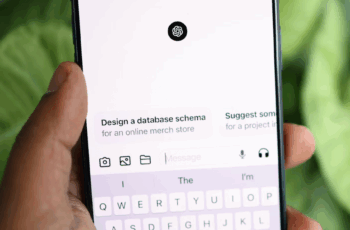What Is Branding And Why Is It Important For Your Business?

Your branding is so much more than your colour palette. It’s the idea your customer has of you whenever they see your name, or your product or service.
That’s why, when it comes to branding your business, everything from your logo design to your social media has to be saying the same thing – whether that’s that you’re a luxury, heritage brand or one that’s shaking up the sector. By associating yourselves with a set of values, you’re able to:
- Set yourself apart from the competition
- Attract and engage your target audience
- Build a greater degree of trust with your customers
- Support your marketing strategy
Of course, ‘premium’ and ‘innovative’ are just a few of the brand personality traits that businesses use to appeal to potential customers. To help you find yours, we’ve broken down how to brand your business here.
What is branding?
Branding is the process of shaping an identity for an organisation. Great brands use every aspect of a business’ persona to communicate the same message. Say, for example, that you’re a no-nonsense, minimalist disruptor. Everything from your business cards to your website should be stripped back, and make a point of saying the bare minimum.
Simply put, your tone of voice is an essential part of an effective brand strategy. It’s more than just sounding ‘bold’ or ‘friendly’ – it’s about creating a unique voice that resonates with your audience and cuts through the noise of your industry.
Why is branding important for a business?
The overall benefit of a brand strategy is that your audience remembers, engages with and gradually becomes an advocate for your brand. Just look at Apple: they have a customer base so dedicated that they’re willing to queue to buy their latest release.
But this is just one of many other benefits of developing a brand, including:
Establishes a business identity
Your identity is what your audience is buying, not your product. Physically, very little might separate your offering and that of your rivals. It’s the perceived differences that your customer has which guides their decision. And it’s your identity that governs these perceptions.
Generates new clients
If you tailor your identity to a certain demographic, your brand messaging will start to engage them. Customers shop for brands that share the same values as them, whether that’s eco-friendly or high in quality. Once your packaging, website and social media are all displaying these values, you’ll even begin to attract audiences that may not necessarily be your target demographic.
Builds trust with potential clients
Once audiences believe that you walk the walk when it comes to your values, they’ll trust you. This trust is what builds a solid foundation of ‘fans’ – that is, customers who will regularly buy from you and recommend you to family and friends. Patagonia is an example of this, as they have used brand marketing to stress their commitment to sustainable living and innovation.
Helps support advertising
A successful brand plays a key role in your marketing strategy. On shelves, social media and e-commerce websites, your brand firmly signifies where you sit in the marketplace. Your advertising should complement this stance. Using benefit-led copy, your campaigns can reinforce values and bring together all the working parts of your brand.
How do you establish a brand for your business?
Dig deep into who you are as an organisation. Ask yourself: what problem are you solving? Who are you solving it for? Then look at all the competitors offering the same solution. What is different about you? If it’s that you’re taking a fresh approach to the industry, then write down what’s considered ‘fresh’ in that market.
Once you’ve answered all these questions, you can begin building your brand. Use the values that you’ve identified to determine how you look and how you speak, as well as things like your vision, mission, purpose and commitments.
In terms of tone of voice, make sure you’re crystal clear on what that sounds like in reality. If you write down ‘punchy’, provide a few example sentences to show what you mean by that. This makes it easier to brief agencies and onboard new members of staff. Don’t forget to back every decision you make with internal research. After all, you may want to sound one way, but that could totally alienate your target market.
How Making You Content can help
Here at MYC, not only will we help you determine a tone of voice for your brand, we’ll even steer your content, social media and advertising campaigns so that every aspect of your marketing is aligned.
Interested? Let’s get started! Our team of content creators will build strength and consistency into your brand – whether you’re just starting out or in need of a refresh.




